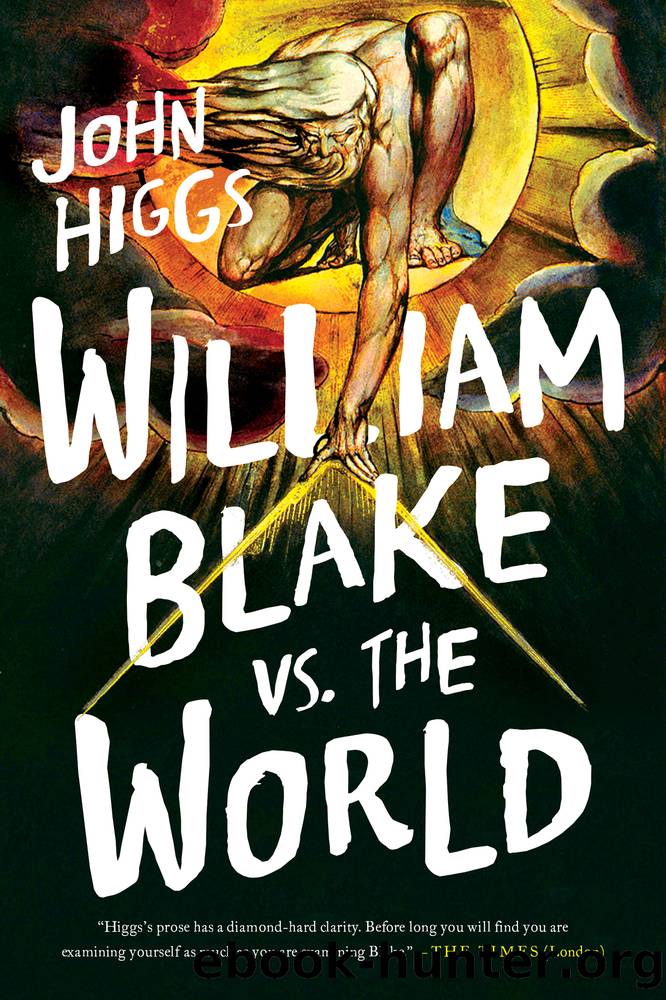William Blake vs. the World by John Higgs

Author:John Higgs
Language: eng
Format: epub
Publisher: Pegasus Books
Published: 2022-05-03T00:00:00+00:00
And the voice faded mild
I remaind as a Child
All I ever had known
Before me bright Shone
That the experience had turned Blake into âa Childâ suggests a return to the innocent state of consciousness he experienced wandering the countryside as a youth. Of course, such an elated and ecstatic vision coming so soon after the âMelancholyâ he experienced in London would now be thought of as bipolar or manic-depressive symptoms. Such a condition may have been a factor in his awareness of contraries.
The strange idea at the heart of this vision, that every particle of the universe is a little man, and that collectively they make up a universal man, is one that can be found in Swedenborg. In the years before his visions, as weâve noted, Swedenborg was what we now think of as a proto-scientist. He attempted to understand what the universe was made of, on both micro and macro levels. Through his studies, he concluded that the cosmos was, to borrow a much later word, a hologram.
With a hologram, the entire image is encoded at every point of the picture. If you were to cut in half a regular photograph and discard the left half, what would remain would be the right-hand part of the image, and nothing more. If you were to cut a hologram in half and discard one part, however, you would be left with a smaller version of the same image. Continue cutting and you would get smaller and smaller holograms, all of which would contain the entire image. There are many modern physicists who take the idea of a holographic universe seriously, although they arrived at this conclusion for very different reasons to Swedenborg.
Swedenborg believed that everything in the universe worked like a hologram. The sun, for example, would be made up of countless tiny versions of the sun, each of which could be further subdivided into endless smaller suns. Likewise, the sun could be thought of as being a constituent part of some larger, vaster sun.
Swedenborg lived at a time when chemistry was in its infancy. The idea that the universe was built from tiny building blocks, called atoms, had been around since the ancient Greek philosopher Democritus, but it would take until 1905 before Albert Einstein proved that atoms existed. We now know that a lump of a natural element such as gold can be endlessly divided, down to an atomic level, into smaller and smaller pieces of gold, as Swedenborg believed. But most things are created from a mix of different elements, rather than being a unique substance. The sun is not made of smaller and smaller elements of sun, for example, but out of a combination of helium and hydrogen atoms, with a few other elements. In his attempts to explain the materiality of the universe, Swedenborg has been shown to be wrong, but, given what was then known about the nature of things, his theory was certainly interesting.
When his attention moved to spiritual matters, Swedenborg again applied the logic of his holographic, fractal-like cosmos to the higher realms.
Download
This site does not store any files on its server. We only index and link to content provided by other sites. Please contact the content providers to delete copyright contents if any and email us, we'll remove relevant links or contents immediately.
Kathy Andrews Collection by Kathy Andrews(11726)
The remains of the day by Kazuo Ishiguro(8819)
Paper Towns by Green John(5087)
Spare by Prince Harry The Duke of Sussex(5072)
The Body: A Guide for Occupants by Bill Bryson(4974)
Industrial Automation from Scratch: A hands-on guide to using sensors, actuators, PLCs, HMIs, and SCADA to automate industrial processes by Olushola Akande(4972)
Machine Learning at Scale with H2O by Gregory Keys | David Whiting(4172)
Be in a Treehouse by Pete Nelson(3942)
Never by Ken Follett(3788)
Harry Potter and the Goblet Of Fire by J.K. Rowling(3772)
Goodbye Paradise(3726)
Into Thin Air by Jon Krakauer(3308)
The Remains of the Day by Kazuo Ishiguro(3293)
The Cellar by Natasha Preston(3259)
The Genius of Japanese Carpentry by Azby Brown(3224)
Fairy Tale by Stephen King(3216)
120 Days of Sodom by Marquis de Sade(3177)
Drawing Shortcuts: Developing Quick Drawing Skills Using Today's Technology by Leggitt Jim(2996)
The Man Who Died Twice by Richard Osman(2995)
